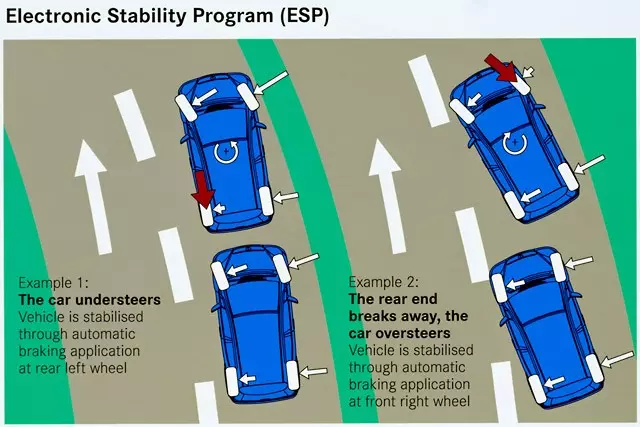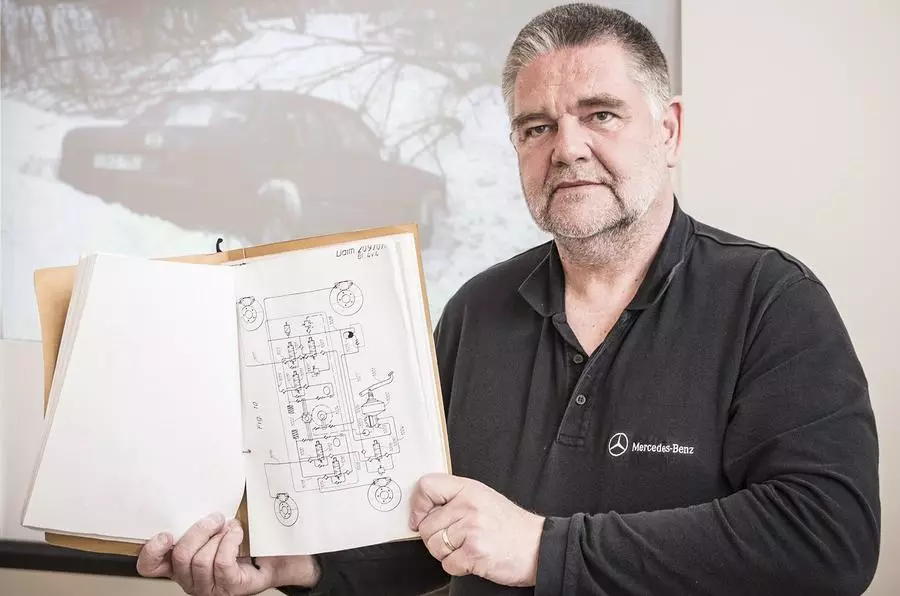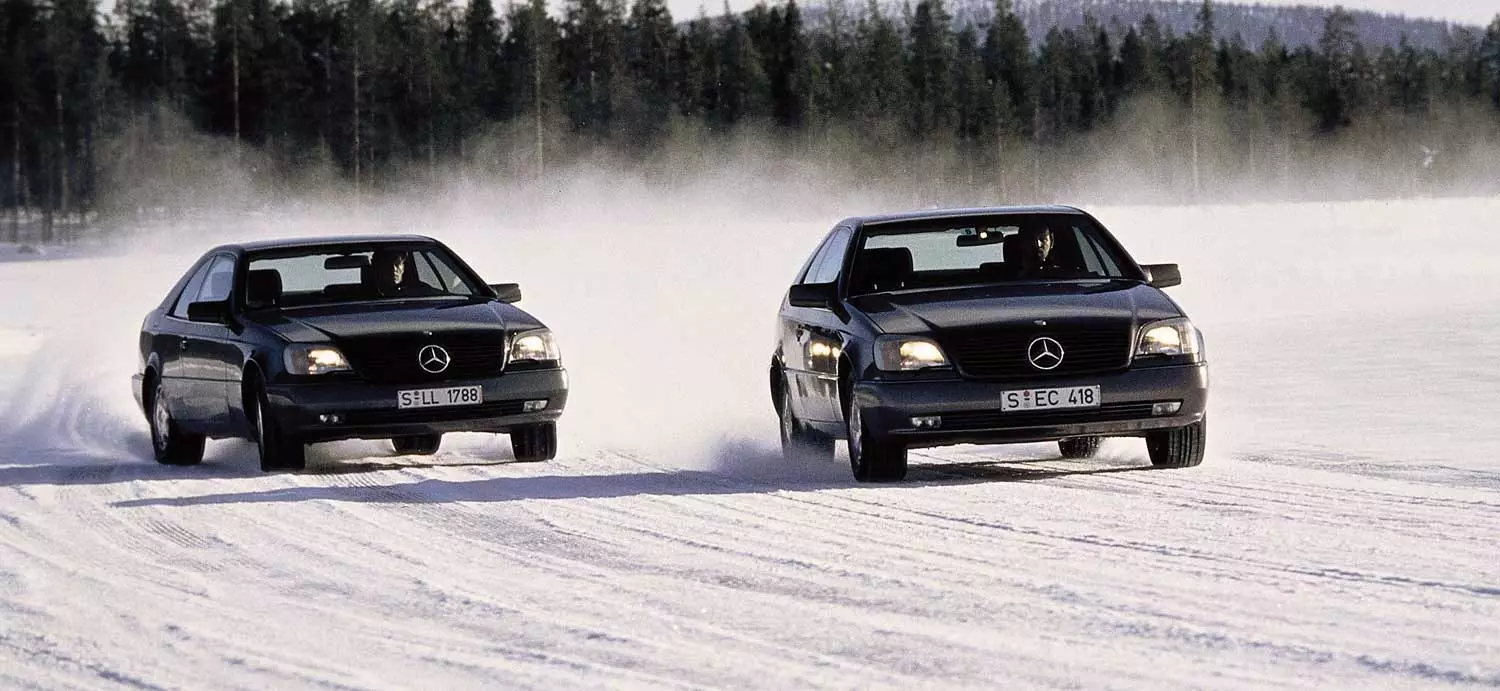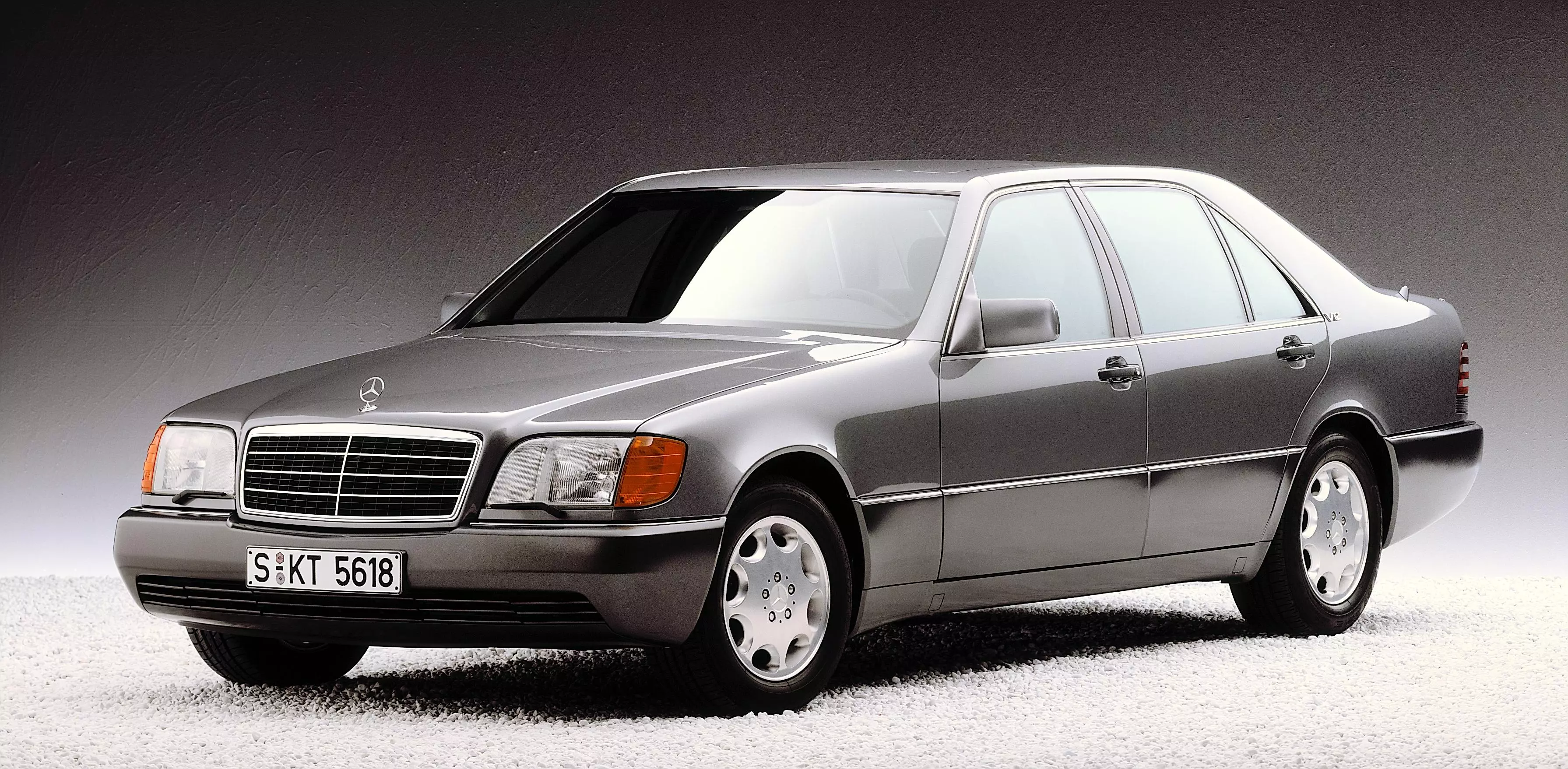ESP is considered to be one of the biggest advances in car safety since the introduction of the seat belt. It is estimated that since its introduction in 1995, ESP has already prevented more than one million fatalities globally.
But what is ESP? Hidden behind these three letters is the definition of Electronic Stability Program — it is also known as ESC (Electronic Stability Control) or DSC (Dynamic Stability Control). Translating into good Portuguese we obtain Electronic Stability Control.
What is your function?
The purpose of this system is to minimize the likelihood of the car losing control in corners or on low-grip surfaces.
This is effectively an extension of the anti-lock brake system (ABS), as when it detects the loss of directional control — as in an under or oversteer situation — it can act individually on the brakes, in order to maintain the trajectory originally intended by the driver.
Some systems, in addition to acting on the brakes, also reduce engine power until control of the car is restored.

And in the beginning there was a misunderstanding
And as with the story of so many inventions, this one also came about by accident… literally as an accident. Frank Werner-Mohn, a young Mercedes-Benz engineer, was carrying out winter tests in Sweden behind the wheel of a W124 (Class E) in February 1989. And as we can see in the featured image of this article, the test ended up in a ditch, with the car being partially buried in snow.
Alone, far from Stromsund, the nearest town, he still had to wait a long time for the tow - at the time there were no mobile phones for quick communication.

Time that allowed her to ponder what had happened to her, which quickly led to an idea that could have avoided her being lost. What if the ABS system — which acts on the pressure of the braking system, preventing the wheels from locking — could communicate with a ECU that measured the lateral movement of a car, measuring the slip angle, direction and speed difference between the wheels ?
From a toy helicopter to a Scud missile
The idea was then to moderate power and/or activate the brakes individually in order to prevent skidding. At the time, Bosch was working on a similar system, but with the difference that the system only worked when the brakes were applied in an emergency. Werner-Mohn's idea was distinguished by the fact that the system was always active, constantly monitoring not only the car's behavior but also the road conditions.

Back at Mercedes-Benz in Stuttgart, Frank Werner-Mohn and his team got permission to build a prototype to put the theory into practice. The first hurdle was finding a gyroscope to measure the car's lateral movement. The solution was even buying and sacrificing a helicopter! Well, not a real helicopter, but a remote-controlled toy one.
It worked. The toy's gyroscope demonstrated that the theory could be put into practice. But more was needed. The helicopter's gyroscope proved to be insufficient and another with greater processing capacity would be needed. And they weren't half measures — found the gyroscope with the ideal characteristics in a… Scud missile!
The test
Armed with the correct “ingredients” they were able to build a test car. A development that would go on for two years.
The decision to move forward with system integration into production cars would come quickly after a demonstration test by Mercedes-Benz management. In that test, they put one of the brand's top executives — known for his “shy” driving — at the wheel of the prototype against the official test drivers of the brand on a track on a frozen lake.

To everyone's amazement, the executive was practically as fast as the official pilots. Another attempt with the system turned off and the member of administration did not pass the first curve, losing himself. The effectiveness of what would become known as ESP was proven beyond any doubt. But… did you know that Frank Werner-Mohn's idea had been ridiculed by some of his colleagues?
Frank Werner-MohnOnce they saw that this technology could safely prevent a cornering skid, the administration immediately approved it. At the time, it was a revelation.
In March 1991 the green light was given for the ESP to be integrated into production cars. But it was only in 1995 that this happened for the first time, with the Mercedes-Benz S-Class (W140) having the debut of the new security system.

The Moose That Democratized ESP
That the technology worked was beyond doubt. But for its effects to be really felt, contributing to a decrease in missteps, it was necessary to scale and integrate the system in most cars.
This would happen dramatically and "fate willed" that Mercedes-Benz was involved. In 1997, a Swedish publication, Teknikens Värld, was testing the then new Mercedes-Benz A-Class, the smallest Mercedes ever. One of the tests performed involved an emergency evasive maneuver, dodging a hypothetical roadblock and returning to its carriageway.
The A-Class failed the test spectacularly and overturned.
The news of the test result flared like wildfire. The journalist who tested him, when explaining what the test consisted of, used as an example a maneuver to avoid colliding with a moose on the road — situation with a high probability of happening on Swedish roads — and the name stuck. The moose test thus made its most famous victim.
The problem would be solved by the German brand by putting the ESP in its most affordable model. Hence integrating ESP across its entire range did not take long. As Werner-Mohn says: “We thank the journalist who took the test because he sped up the implementation of our technology”.
Shortly thereafter, Mercedes-Benz would hand over the patents to technology providers without charging anything for it.
A decision by Daimler that caused mixed feelings for Werner-Mohn. On the one hand he regretted that his invention was given away without any financial compensation, but on the other hand he understood that the best decision was made by making it accessible to everyone. The results speak for themselves: within 10 years the German authorities have started to see a reduction in accidents without third-party involvement in cars equipped with ESP.
Today ESP is standard equipment in most cars , from city dwellers to super sports. Its contribution to car safety is undeniable. And it all started with a misdirection…
Frank Werner-Mohn will retire this year after 35 years with Mercedes-Benz. At the moment, he is working on autonomous driving technologies that will still take a few years to reach “our” cars.
